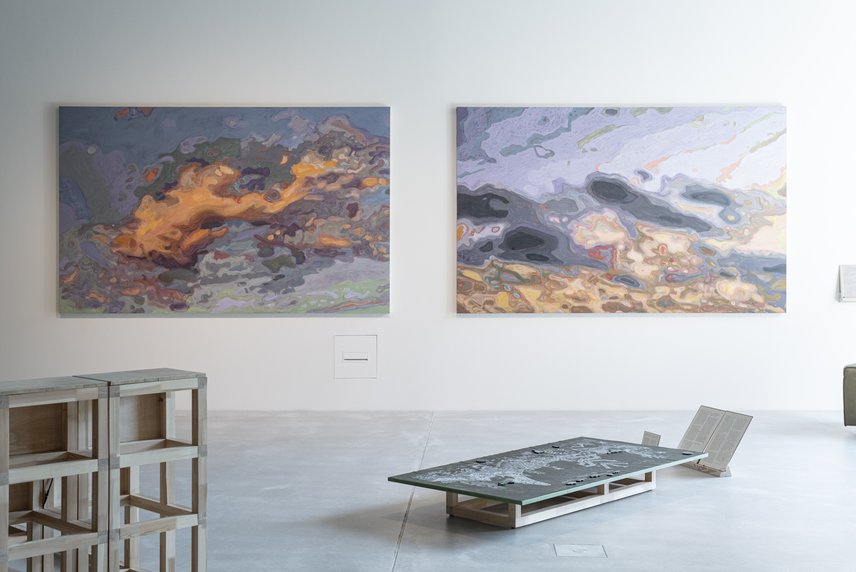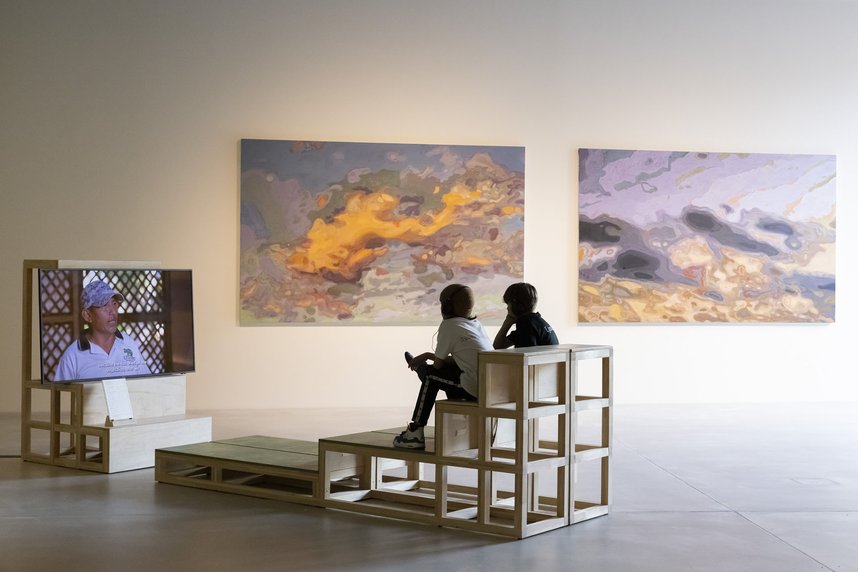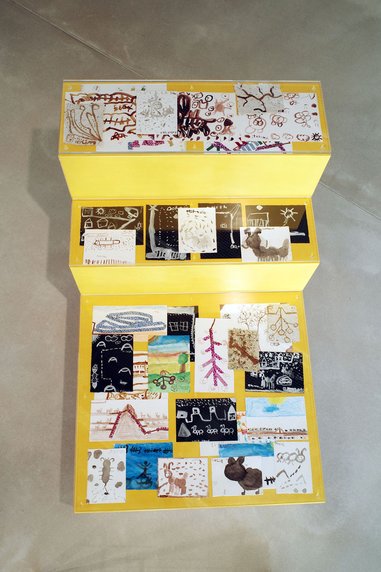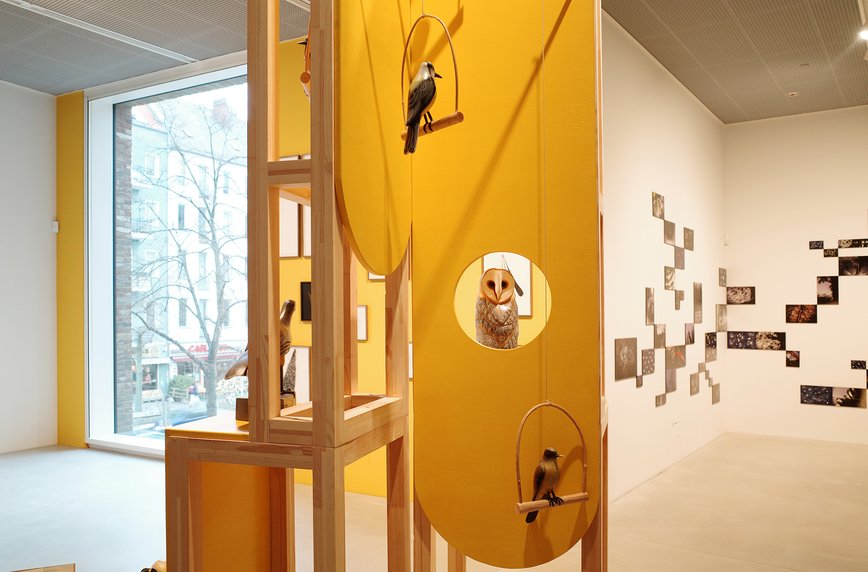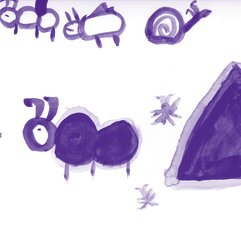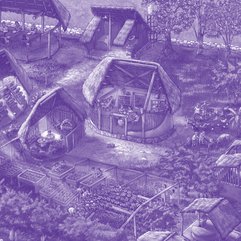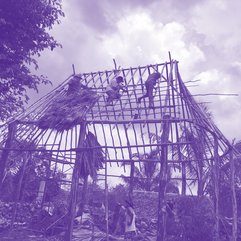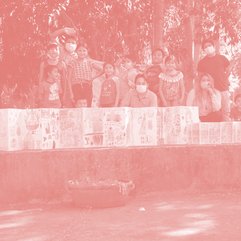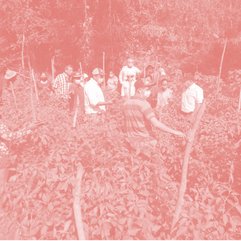XOOK K’IIN
perceiving temporalities
Opening Hours
Thursday: 3 p.m.-8 p.m.
Friday: 3 p.m.-8 p.m.
Saturday: noon-8 p.m.
Sunday: noon-8 p.m.
Save the Date
all ages welcome
in German/in English/in Yucatéc Maya

With Abrahán Collí Tun, Adriana Otero Puerto, Alejandro Ramírez López, Bernardo Xiu, Carolina Camacho Villa, Carlos Echeverría, Emilia Tun, Estela Ay Chan, Gerda Gruber, Humberto Ak'abal, José Clemente Echeverría, Evaristo Ix, Julián Dzul Nah, Maria Elisa Chavarrea Chim, Mario Euán Chan , Mario Tun, Matías Hoil Tzuc, Mauricio Collí Tun, Omar Said Charruf, Patricia Martín Morales, Pedro Uc Be, Rafiki Sánchez, Rodrigo Llanes Salazar, Roger & Rosa Juárez, Santos Chuc, Santos Chuc Caamal, Saúl Villa, Tania Eulalia Martínez Cruz, Vanessa Rivero, Mayur and Tushar Vayeda.
The Maya xook k’iin is a longstanding practice used to predict weather variations and phenomena like hurricanes, droughts, rains, and winds. It is a form of knowledge based on direct experience with the environment acquired by Maya Peoples over hundreds of years. The Yucatec Maya term xook k’iin comes from xook “to count or read” and k’iin “sun, time, and day.” To predict the weather for the coming year, atmospheric phenomena are interpreted every January, mostly by peasants of milpa agriculture, a traditional system of agroforestry based on polyculture cropping developed over three millennia throughout Mesoamerica. This knowledge about the relationships between natural phenomena and future weather phenomena, which is increasingly practiced by fewer and fewer people, is critical for determining rain and dry seasons and favorable burning, planting, and harvesting times. Over the course of a year, the initial interpretation is further refined by observing specific plants, insects, birds, and more, allowing for local adaptions to the seasonal predictions. This diverse web of life, as well as the Maya culture, language, and forms of knowledge that are inextricably interwoven with it, are threatened by social and ecological stressors such as those posed by industrial agriculture, deforestation, megaprojects, and the effects of climate crisis and mass species extinction. At the same time, there is a growing awareness that traditional and indigenous knowledge systems and techniques used across the planet for growing food, controlling wildfires, and guarding agricultural and ecological diversity could help contain the accelerated destruction of the natural world.
XOOK K’IIN perceiving temporalities is an exhibition in becoming that starts by convening newly commissioned contributions, entirely conceived and produced by people from different walks of life engaged in the territory of the Yucatán Peninsula, thereby activating their circulation both there and in Berlin. Contributors include Maya milpa peasants, xook k’iin practitioners, artists, poets, craftsmen, educators, academics, Indigenous independent researchers, elementary school children, and a documentary filmmaker. Their practices and knowledges inform the exhibition, each responding creatively to different bioindicators that are part of the xook k’iin, be it clouds, winds, ants, varieties of birds and their nests, the ceiba tree, or the flamboyant flower.
Three texts were commissioned to introduce, contextualize, and expand on the practice and its relevance today within and beyond the Yucatán Peninsula, while also addressing the threats embedded in its loss and in the radical degradation that ecosystems, both local and global, are undergoing.
Yucatán: A Vulnerable Ecosystem
Caught between Hopes and Threats
- Rodrigo Llanes Salazar
The paintings and sculptures shown in the exhibition are each accompanied by a paragraph that shares observations and interpretations of the behavior, changes, and shapeshifting of each natural phenomenon. These observations, collected by the educators and researchers Julián Dzul Nah and Abrahan Jesús Collí Tun, are based on testimonies of Maya peasants from different communities.
Acerca del uso de algunos Bioindicadores
The different contributions in this exhibition are diverse, entangled, and incomplete interpretations of a life practice that inspires to sense and interpret signals in nature without mediation. As Pedro Uc Be writes in a text commissioned for this exhibition: The Xook K’iin “is not just a method or handbook, an observable, experiential culture -or part of it-, since it is being lived every day, every night, every afternoon or every morning in relation to the harmonious web of nature. It is like a house where each of its inhabitants responds to the natural stimuli that arise from same indivisible fabric that forms life."
Team
Exhibition production: Setareh Shahbazi
Exhibition design: Aleksandra Zielińska
Graphic design: Stoodio Santiago da Silva
Lighting design: Emilio Cordero Checa
Production Team: Santiago Doljanin, Sophie Kindermann, Till Ronacher & Sebastian Schwindt (und.studio), Matthieu Séry, and Marc Schamuthe
Carpentry: Willem van den Hoek
Translation & editing in English, Spanish, German: Michele Faguet, Gegensatz - Translation Collective
Spanish editing and proofreading: Loreto Solis
Curated, commissioned & produced by: Spore Team




